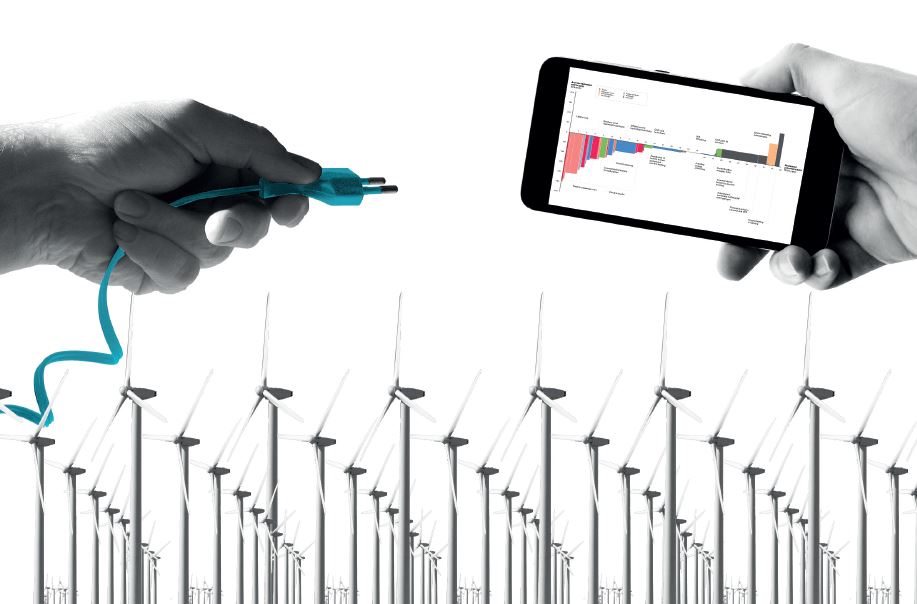DOWNLOAD GRAPHS
In the Paris Agreement the world’s nations committed to keeping the global temperature rise well below 2 degrees Celsius above pre-industrial levels, and to pursue efforts to limit the temperature increase to 1.5 degrees Celsius. Many European countries have since updated or are in the process of updating their long- and medium-term climate targets. In Finland, the current government has stated a vision for Finland to become carbon neutral by 2045, but the accompanying domestic emission reduction targets are yet to be discussed.
To be in line with the Paris commitments, based on separate assessments by the Finnish Climate Change Panel and Climate Analytics, Sitra recommends Finland set a medium-term target of at least 60 per cent reduction in emissions by 2030 compared to 1990.
To date, Finland has succeeded in reducing emissions by 21 per cent since 1990 to roughly 56 million tonnes of carbon dioxide equivalents (MtCO2e) per year, driven mainly by increased biomass use in power and heat production, decreased use of oil in heating and decreased landfill disposal of waste. At the same time, the carbon sink of Finnish land and forests has nearly doubled in size since 1990 as the result of increasing forest biomass. Despite these achievements, the current trajectory leaves Finland roughly 18 MtCO2e above the 60 per cent emissions reduction ambition.
This highlights the need for Finland to clearly alter its course.
Even with a strong shared understanding of the imperative to reduce greenhouse gas emissions, there is uncertainty about the most impactful measures. To support Finland’s decarbonisation journey and the charting of our national emission abatement path, we want to provide an objective fact base of the most economical abatement technologies and fuels.
To that end, together with McKinsey & Company, we reviewed carbon dioxide abatement technologies, their abatement potential and associated costs, and prioritised them into a minimum-cost pathway for decarbonisation. A key result of our study is this pathway, a consistent collection of measures, that would lead to the 60 per cent emission reduction target by 2030 in a cost-efficient way. We believe that the pathway advances the discussion on what the decarbonisation measures and costs could look like for Finland.
Although subject to some uncertainty, our analysis suggests that implementation of the 60 per cent abatement target is not only technically feasible but also economically viable, even considering the restrictions put on the abatement measures in this report. Following our analysis, Finland can achieve approximately 50 per cent abatement by leveraging technology switches with negative or neutral abatement costs, most notably in the electrification of transport and wind power generation. The remaining 10 percentage points to reach the 60 per cent abatement target are more challenging, yet feasible, and may involve further industrial decarbonisation or a combination of other measures. The keys to achieving the goal include setting and following a national decarbonisation plan, transforming the power system to support emission-free electricity and setting carefully formulated policies and incentives consistent with the decarbonisation plan.
The report intentionally avoids directly assessing policies, political implementation programmes and other governmental interventions. Instead, it is intended to serve as a fact base for policymakers, academics and corporate leaders when setting concrete targets and discussing how best to achieve the required emissions reductions.
The analytical base of the report is built on existing literature and a number of global and local databases. We thank all the parties who contributed to this work; compiling this report would not have been possible without the valuable knowledge and insights from private sector experts, industry associations, research institutes and government entities.
The Intergovernmental Panel on Climate Change (IPCC), the United Nations expert body for assessing the science related to climate change, recently warned that limiting global warming to 1.5°C would require “rapid and far-reaching” transitions in all sectors to avoid the most devastating impacts of climate change.
The time to act is now, and this report charts a pathway for Finland to cut emissions in a cost-efficient way.


















Recommended
Have some more.